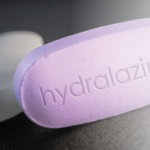WASHINGTON, D.C.—In 2011, rituximab was approved by the U.S. Food and Drug Administration for treatment in adults for two forms of antineutrophil cytoplasmic antibody (ANCA)–associated vasculitis—granulomatosis with polyangiitis (GPA; Wegener’s) and microscopic polyangiitis (MPA)—based on the results of the Rituximab for ANCA-Associated Vasculitis (RAVE) trial.1 Prior to rituximab, cyclophosphamide was used for many years as off-label treatment of these diseases and remains a viable option for a select group of patients, according to Carol Langford, MD, director of the Center for Vasculitis Care and Research at the Cleveland Clinic.
“We now have two effective options for remission induction of severe GPA/MPA, and that is great news for us and most importantly for our patients,” said Dr. Langford here at the 2012 ACR/ARHP Annual Meeting, held November 9–14. [Editor’s Note: This session was recorded and is available via ACR SessionSelect at www.rheumatology.org.]
Billed as “The Great Debate,” the session was a history lesson on the one hand, with Dr. Langford discussing the long years of experience, both personal and published, with cyclophosphamide; and, on the other hand, an overview of the current evidence establishing the role of rituximab as first-line therapy for remission induction in patients with severe disease by Ulrich Specks, MD, professor of medicine in the division of pulmonary and critical care medicine at the Mayo Clinic, Rochester, Minn.
Treatment Consensus on Some Patients
What emerged was an agreement that rituximab is the drug of choice in patients with severe disease relapse, as well as for those who have received prior treatment with cyclophosphamide.
For other select patients, however, cyclophosphamide may still play an important role. Both Drs. Langford and Specks agreed that patients who were excluded from the RAVE trial should not automatically be considered for rituximab. Patients excluded from RAVE included those with limited disease, those with disease that was too severe as demonstrated by a serum creatinine greater than 4.0 mg/dL, or the need for mechanical ventilation because of alveolar hemorrhage.
“Data from the RAVE trial cannot necessarily be extrapolated to patients that are substantially different from the trial cohort,” said Dr. Specks, adding that evidence to justify the use of rituximab, as well as cyclophosphamide, for patients with ANCA-associated vasculitis in patient populations different from the RAVE cohort needs to come from sources other than the RAVE trial.
One such source, he said, is from the Rituximab Versus Cyclophosphamide in ANCA-Associated Vasculitis (RITUXVAS) trial, which included patient populations that were different, but what he sees as complementary, to the RAVE trial.2 The patients in the RITUXVAS trial all had newly diagnosed ANCA-positive disease and severe renal disease (more severe than in the RAVE trial). The RITUXVAS trial found no difference in sustained remission at 12 months between rituximab plus cyclophosphamide versus cyclophosphamide followed by oral azathiprine.
Dr. Langford said that she personally feels more comfortable using cyclophosphamide in patients excluded from the RAVE trial—that is, those with rapidly progressive glomerulonephritis with creatinine of more than 4.0 mg/dL and those with alveolar hemorrhage requiring mechanical ventilation.
Other Potential Indications for Cyclophosphamide
Drs. Langford and Specks agreed that cyclophosphamide has a primary role for treatment in patients with adverse events specific to rituximab or those who fail rituximab, which, according to Dr. Specks, is quite rare.
Dr. Langford also emphasized that she thinks patients with newly diagnosed severe disease who do not have an absolute contraindication to cyclophosphamide should be given cyclophosphamide as an option. For these patients, she suggested that both agents offer a benefit–risk profile that will appeal differently to different patients.
She noted that one advantage of cyclophosphamide is its established efficacy over 40 years of experience. “We understand this agent very well and can provide patients with detailed information regarding its efficacy, its toxicity, and strategies as to how to optimally use it,” she said, emphasizing that dosing strategies are available to minimize or prevent the known side effects that can affect fertility in men and women, blood counts, and cause bladder toxicity. For example, she said that these side effects can be reduced or prevented by limiting the duration of treatment to three to four months but no more than six consecutive months.
Some patients, she said, will feel more comfortable receiving cyclophosphamide based on this extensive body of experience, while other patients will prefer the overall side-effect profile of rituximab despite some unanswered questions, such as the long-term treatment-related toxicities as well as the diverse infectious consequences of immunosuppression.
She emphasized that time is needed to understand the full picture of rituximab. “Our experience with cyclophosphamide taught us that toxicities can take time to develop and recognize and that refinement of how to optimally use the agent also requires longer term experience and investigation,” she cautioned.
Dr. Specks also highlighted the need for caution when using rituximab because it is an immunosuppressive agent, but emphasized that the overall infection risk seems similar to that of carefully monitored cyclophosphamide treatment followed by azathiprine. He also said that rituximab has no long-term risks to fertility or known long-term malignancy risk, but emphasized that the RAVE trial was not designed to address these issues.
Mary Beth Nierengarten is a freelance medical journalist based in St. Paul, Minn.

